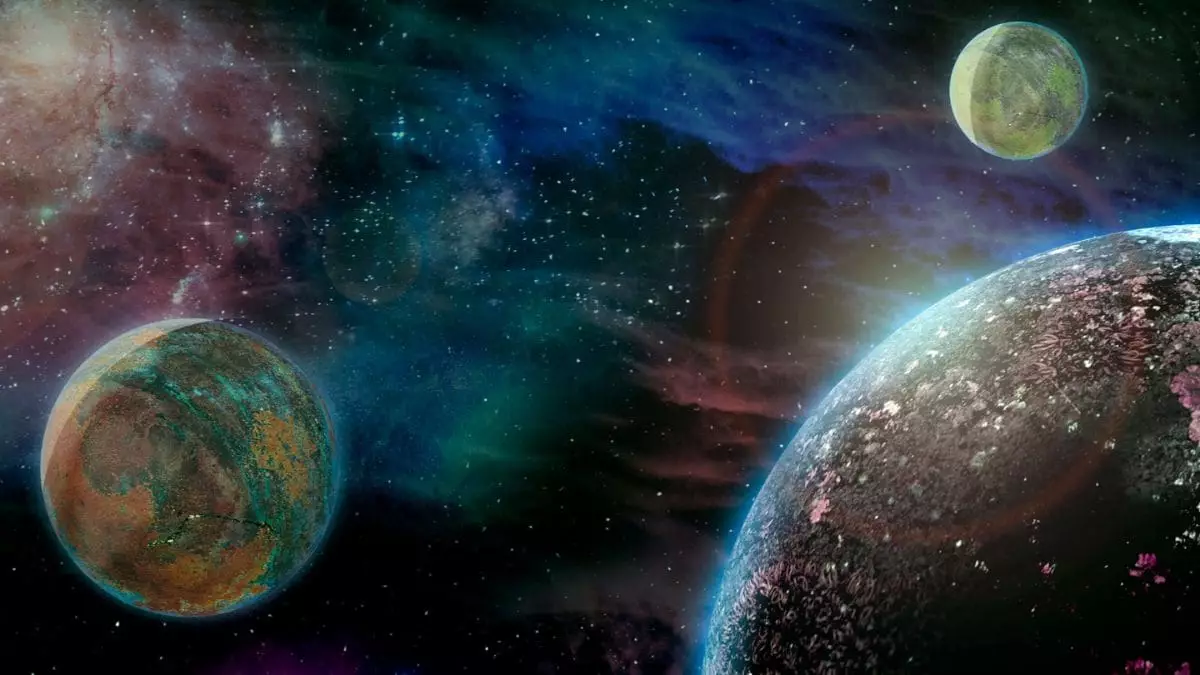In a moment of sheer cosmic triumph, astronomers have unearthed the universe’s elusive ordinary matter — the very building blocks that crystallized mere moments post-Big Bang and constitute the fabric of everything we observe today. Characterized by their brief yet violent bursts of energy, fast radio bursts (FRBs) have acted as celestial beacons, illuminating the shadows where this ordinary matter had long remained hidden. This remarkable breakthrough, meticulously documented in a recent update in Nature Astronomy, offers an exhilarating glimpse into the vast expanse of knowledge yet to be uncovered about our universe.
The Power of Observation: New Tools, New Frontiers
With innovative instruments like Caltech’s Deep Synoptic Array and Australia’s ASKAP, researchers embarked on a pioneering mission, analyzing 69 FRBs over distances stretching an astounding 9.1 billion light-years. Through these investigations, scientists have started tracing baryonic matter scattered throughout the intergalactic medium, a staggering discovery made possible by the intersections of groundbreaking technology and centuries of astronomical inquiry. The densely-packed secrets of this matter are not merely confined within galaxies; they extend outward, reshaping our understanding of cosmic structure and composition.
FRBs, serving as the universe’s cosmic floodlights, reveal an expansive network of baryonic matter — 76 percent is found in the intergalactic medium, with 15 percent in galactic halos, and 9 percent nestled within galaxies themselves. This knowledge crystallizes a pivotal aspect of our universe: ordinary matter is more uniformly distributed than previously thought, starkly contrasted with the enigmatic clumps of dark matter. This data marks a significant leap forward, offering a transformative lens through which to view the evolutionary history of the cosmos.
Revolutionizing the Study of Space
What this finding essentially suggests is that FRBs could become indispensable tools to probe the universe’s grand architecture and dynamic evolution. Each pulse of energy carries with it clues about the composition and distance of matter, allowing scientists to not just observe but effectively interact with the cosmos. Caltech’s DSA-2000 radio array stands poised to detect over 10,000 FRBs annually, paving the way for a new era in radio astronomy. With each FRB decoded, astronomers inch closer to sketching out a more comprehensive map of the universe’s untold mysteries.
This newfound capability to examine the large-scale structures of the universe redefines our approach to understanding galaxy formation and cosmic evolution. Rather than being passive observers, we are now empowered to ask deeper questions and venture into the unknown, guided by these captivating bursts from the furthest reaches of space.
The Ethical Imperative of Cosmic Inquiry
As we celebrate this monumental achievement, we must also pause to reflect on the ethical implications of such a pursuit. The quest for knowledge in our universe must not lead to a detached exploration devoid of humility and responsibility. The discoveries heralded by FRBs remind us that understanding the cosmos is not an end in itself, but a shared journey that binds humanity to a greater existence, urging us to respect and protect our world and its cosmic counterparts. In elucidating the hidden forces that shape our universe, we are called not only to marvel but also to foster a deeper commitment to our collective stewardship of the small planet we inhabit.

